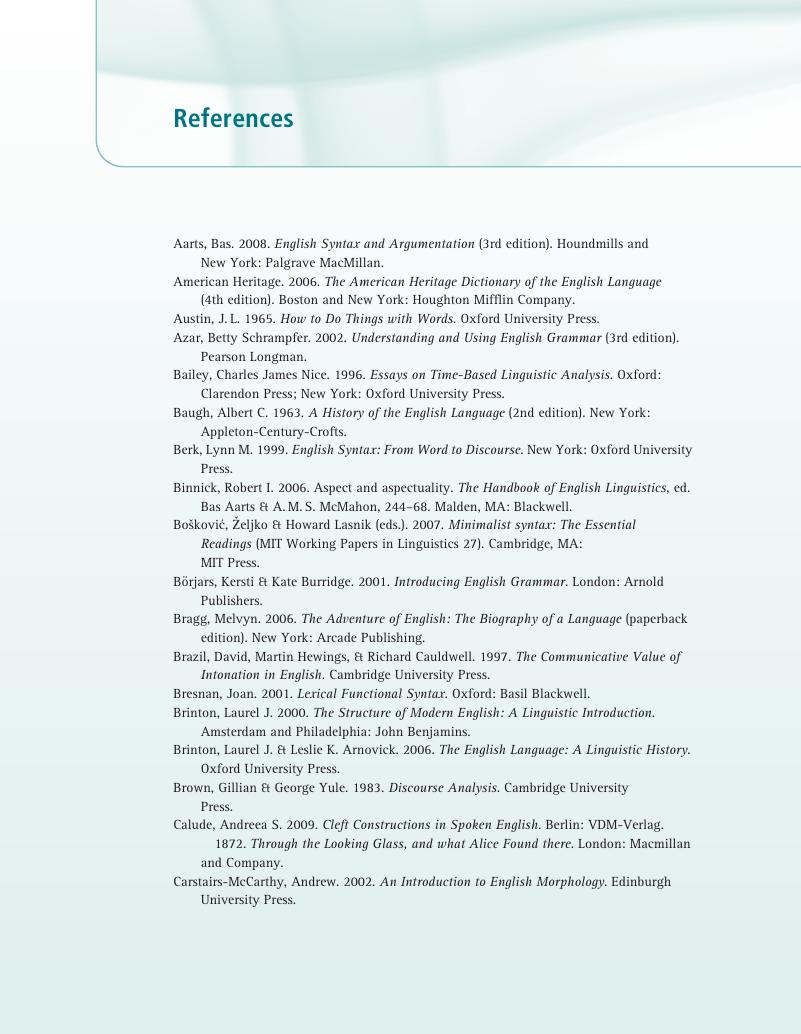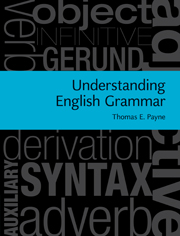Book contents
- Frontmatter
- Contents
- List of figures
- List of tables
- Preface
- Acknowledgements
- List of typographical conventions and abbreviations
- Introduction
- 1 History
- 2 Typology
- 3 The lexicon
- 4 Morphology – the shapes of words
- 5 Participant reference
- 6 Actions, states, and processes
- 7 Basic concepts in English syntax
- 8 Advanced concepts in English syntax
- 9 Complementation
- 10 Modification
- 11 Auxiliaries and the “black hole” of English syntax
- 12 Time and reality
- 13 Voice and valence
- 14 Clause combining
- 15 Pragmatic grounding and pragmatically marked constructions
- Glossary
- Endnotes
- References
- Index
- References
References
Published online by Cambridge University Press: 05 June 2012
- Frontmatter
- Contents
- List of figures
- List of tables
- Preface
- Acknowledgements
- List of typographical conventions and abbreviations
- Introduction
- 1 History
- 2 Typology
- 3 The lexicon
- 4 Morphology – the shapes of words
- 5 Participant reference
- 6 Actions, states, and processes
- 7 Basic concepts in English syntax
- 8 Advanced concepts in English syntax
- 9 Complementation
- 10 Modification
- 11 Auxiliaries and the “black hole” of English syntax
- 12 Time and reality
- 13 Voice and valence
- 14 Clause combining
- 15 Pragmatic grounding and pragmatically marked constructions
- Glossary
- Endnotes
- References
- Index
- References
Summary

- Type
- Chapter
- Information
- Understanding English GrammarA Linguistic Introduction, pp. 412 - 420Publisher: Cambridge University PressPrint publication year: 2010



